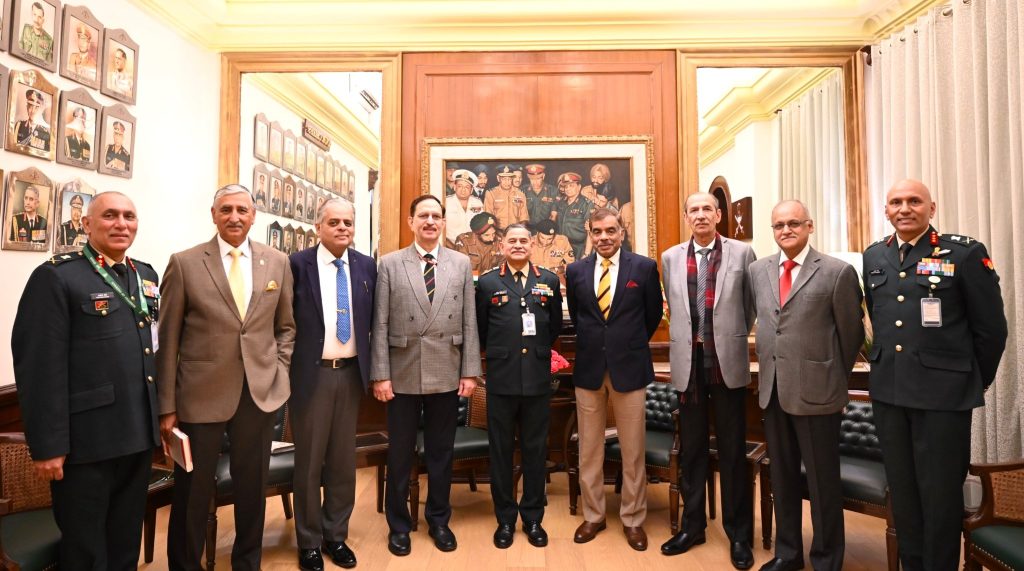A newly unveiled painting in the Army Chief’s lounge has sparked controversy among veteran military officials, leading to a range of reactions online. The painting, titled ‘Karam Kshetra – Field of Deeds’, replaces a historically significant artwork depicting the 1971 surrender of Pakistani forces in East Pakistan, which marked a crucial moment in India’s military history and the creation of Bangladesh.
However, neither of the paintings has been replaced; both remain displayed in the COAS meeting room.

Sources within the Indian Army revealed that the fresh artwork, created by Lt. Col. Thomas Jacob of the 28 Madras regiment, portrays the army as not only a protector of the nation but also as a guardian of righteousness or ‘Dharma’. This painting depicts the Army’s evolution into a technologically advanced integrated force, against a backdrop of snow-capped mountains and the serene Pangong Tso lake in Eastern Ladakh. Notably, it features iconic imagery including the chariot of Krisha and symbols of modern military power such as tanks, all-terrain vehicles, patrol boats, and combat helicopters, encapsulating the message of a nation that values its rich civilization and ready to use just force when necessary.

The painting serves as more than just an artistic expression; it encapsulates an ideology rooted in ancient Indian texts and strategic thought, merging traditional wisdom with contemporary military readiness. It reflects the Army’s commitment to principles derived from the Mahabharata and the teachings of Chanakya, aiming to cultivate an indigenous strategic vocabulary aligned with India’s philosophical and cultural heritage. The Army source commented that the artwork symbolizes the institution’s dedication to defending its borders while honoring its legacy of sacrifice and discipline.
However, dissatisfaction has emerged among veterans regarding the decision to replace the historical painting. Prominent voices from the veteran community have voiced their concerns, particularly about the erasure of a symbol of India’s first significant military victory in over a millennium. Former Northern Army Commander Lt. Gen. H.S. Panag criticized the leadership for seemingly prioritizing mythological and feudal themes over historical facts. He highlighted the significance of the original painting, which depicted the surrender of 90,000 Pakistani soldiers and the establishment of Bangladesh.
Veterans have taken to social media to express their dismay, questioning the rationale behind the removal of the iconic surrender photograph. Air Vice Marshal Manmohan Singh (Retd.) underscored the importance of this historical moment, remarking on how military dignitaries and foreign heads of state would see the representation of a pivotal event in India’s and the Indian Army’s legacy.












